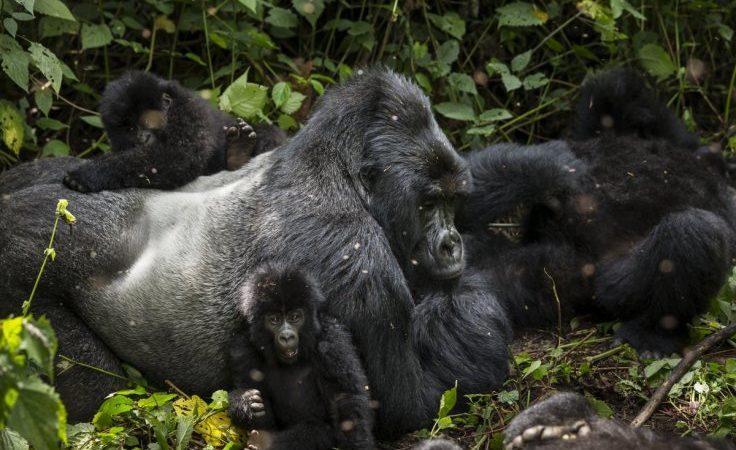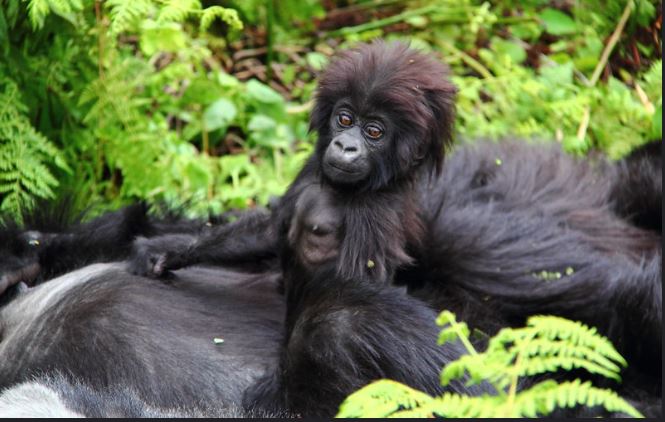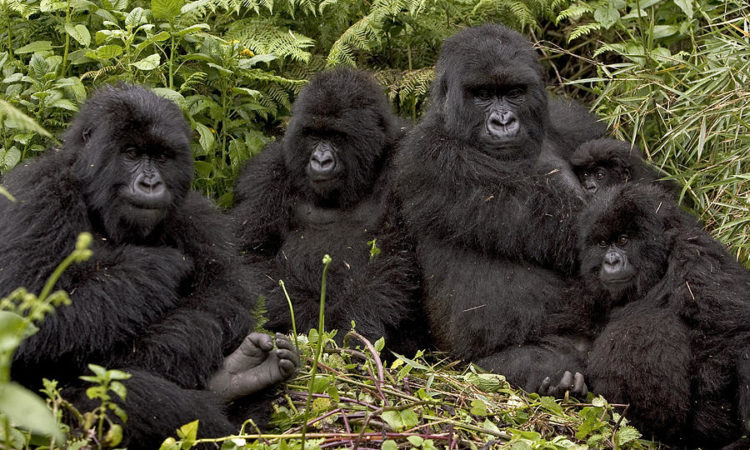How Gorilla Families Work
How Gorilla Families Work is one of the key features that travelers love to learn when they visit a national park for the gorilla trekking activity. Before visiting the Congo gorilla families in Virunga national park, Rwanda gorilla families in Volcanoes national park and the Uganda gorilla families in Mgahinga gorilla national park and Bwindi Impenetrable national park you will have to understand the behavior of the different gorillas in their families. The gorillas in their different families have interesting characteristics that you will find interesting while you visit them during gorilla trekking and gorilla habituation as follows;

Head of a gorilla group
In the different gorilla families, the silverback is the head of a particular gorilla family and it should be noted that a given gorilla family can have more than 3 silver backs, and this can be tricky of which silver back to head the gorilla family. Therefore the different silver backs can fight for leadership and the silverback that emerges the winner becomes the dominant silverback who is overseer of the entire gorilla group. After the battle for leadership, the defeated silver back leaves the group in order to find other members to make a group. On rare occasions, defeated silverback can stay in a particular group but in most cases, when the gorillas leave, they go and find other gorillas that have left their natal homes and once they come together they are able to make a gorilla family.
Migration
Gorilla migration Is quite famous among the different gorilla families and just like other animals migrate for water and food the same applies to the gorillas, the family can be seen moving from one place to another in search of food, for instance in seasons where fruit is readily available, they tend to any other source of food in order to feast on the fruits. The other reason as to why the gorillas can migrate, which is usually in the black backs, they migrate from their homes to go and establish new homes where they can mate with other females because in the a particular gorilla family, the dominant silverback, is the one supposed to mate with the adult females.

Nesting
When it comes to constructs the nests to be used at night, individual nests are constructs by each member of a gorilla family but it should be noted that in cases where an adult female has an infant, she sleeps with her infant in the same nest for easy protection, feeding but during the whole process of childbirth and nursing till the infant gets a little older the dominant silverback is responsible for the protection of the infant and the mother where extra attention is provided to them to protect the mother and the infant and the whole family at large even at the cost of his life.
Mating
Mating among the gorilla families is left for the dominant male (silverback) who has all the rights of mating with all the adult females in the gorilla family. In case a black back or any silverback in the group mates with any adult female in the group then they are forced to get away from the group and in most cases, a fight breaks out. Here the chased away gorillas come together with other gorilla species that might have gotten away from their gorilla families in order to make a new group/family but also if he is chased away and there are no wandering gorillas from different families then he can live as a loner which is quite challenging.
Growth & Social Organisation
- Mountain gorillas: Interesting about gorilla families is the fact that when they are growing up they will face some changes in the family units that is to say when the gorillas between the age of 10-15 leave their homes in order to make new gorilla families with other wandering females in the same age bracket. Females can leave their natal groups in order to find other groups where they can establish another family. The reason as to why they leave is to avoid inbreeding. They will migrate However this doesn’t mean that they will stay in the groups they’ve migrated in for a lifetime because there are chances of them migrating another time. In gorilla families where the females are more than the males, the females will migrate to other groups with lesser females. In a family where the dominant silverback has died, there is a possibility of infanticide where all infants can be killed to avoid possible threats of leadership from the infants. This was evident at the Karisoke research station, in volcanoes national park where a number of infants in a gorilla family where a number of infants were killed.
- Eastern lowland gorillas: To be different from the mountain gorillas, the Eastern lowland gorillas are usually in groups of one male and many females which is not the case for the mountain gorillas where there is always a balance among one another. Females usually migrate from their natal families at the age of 9 years which is different from the mountain gorillas that leave at an age of 10-15 years. There is a chance for the males to stay in an all males group until they are able to see the
Grooming
Grooming among the gorillas is usually done between two members where they can check for each other’s ticks, they can also be seen cleaning each other’s ears with grass sticks. Infants are usually taken care of by the mothers who are their main caregivers from the time of birth to a period of 12 months where they start becoming independent but still they can be checked by the mother till the age of 21 months here they become totally independent.

Succession in a gorilla family
In case a dominant male loses his life, another superior silverback in the family will take over the position however it is also possible for a fight to break out among the different silver backs for a right to lead a gorilla family. In some cases when a black back gets silver fur to become a silverback, they can challenge the dominant silverback to a fight and once they defeat them, they are able to lead and the defeated silverback is forced to leave the group or decide to stay in the group.
With those few key points on how gorilla families work, one can now know better what to observe how to relate with the information provided to make the whole gorilla trekking process meaningful.


